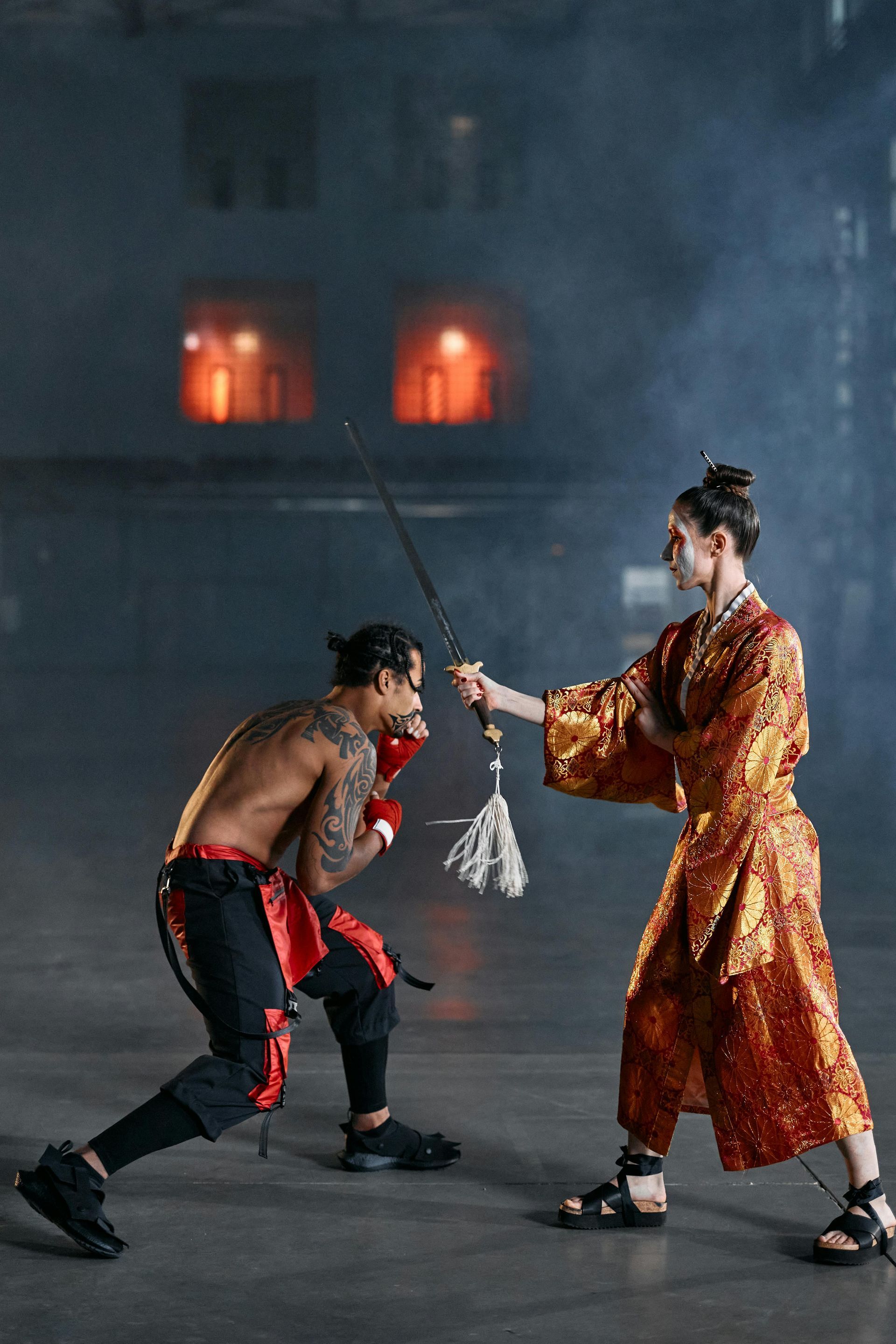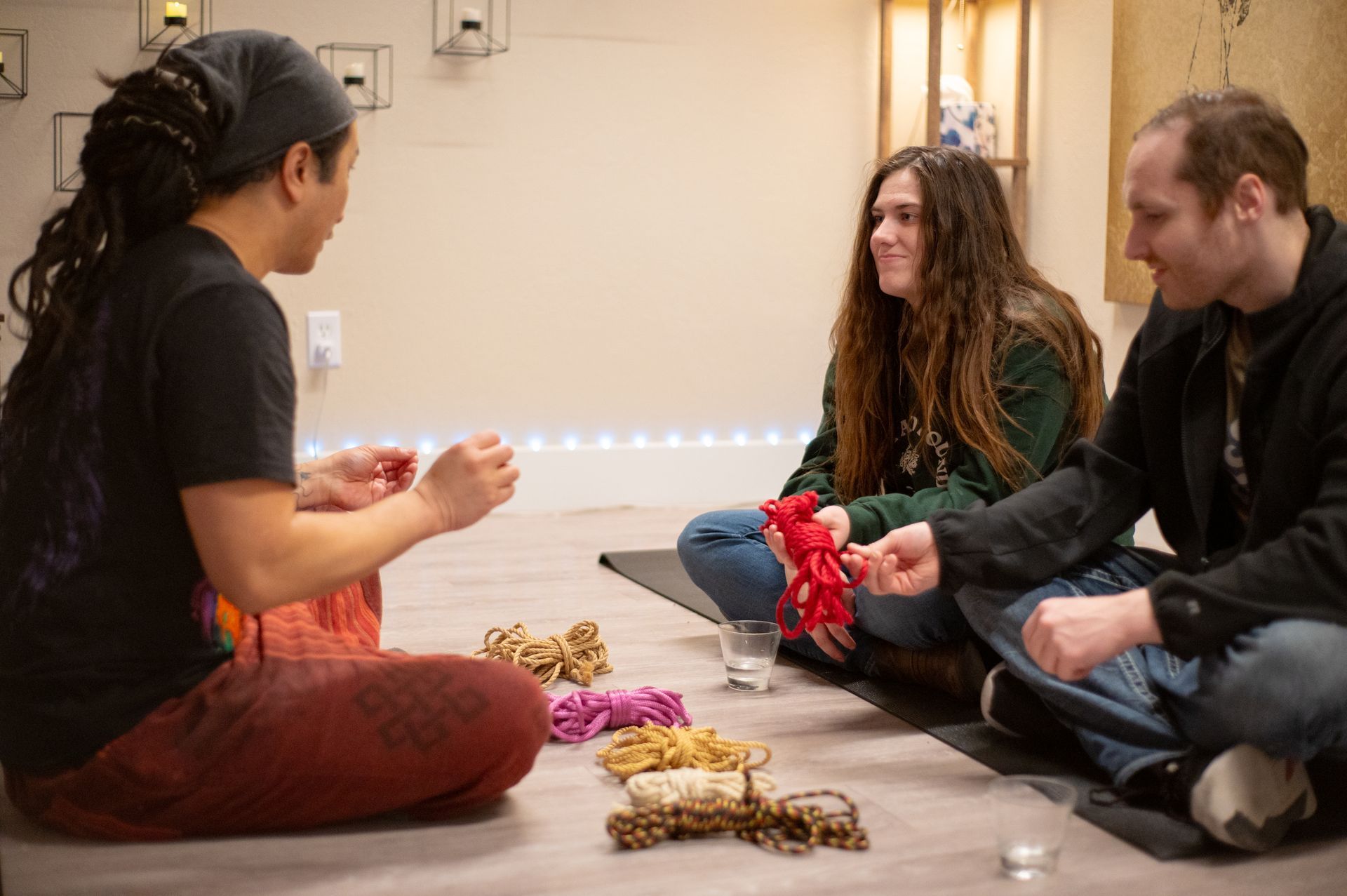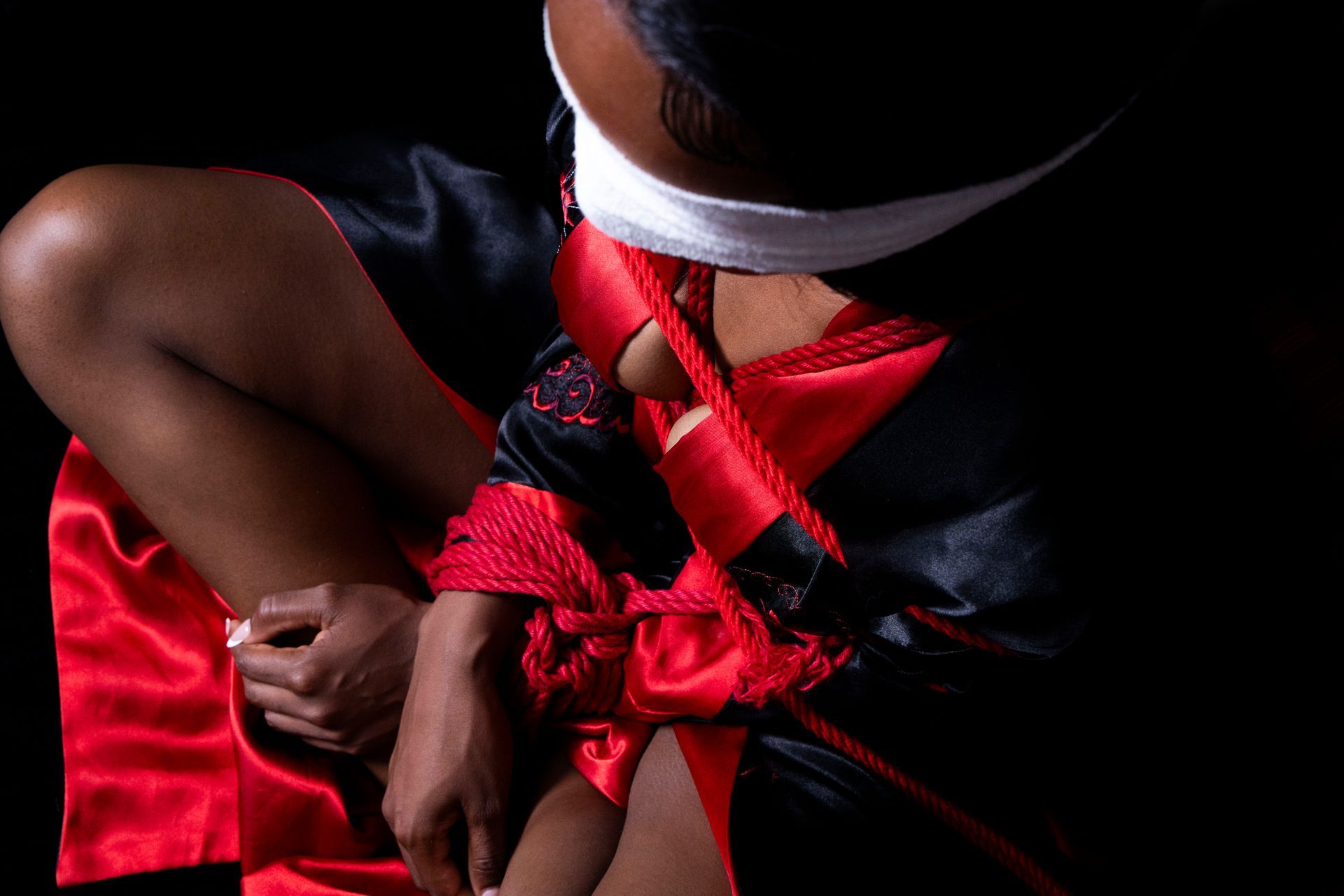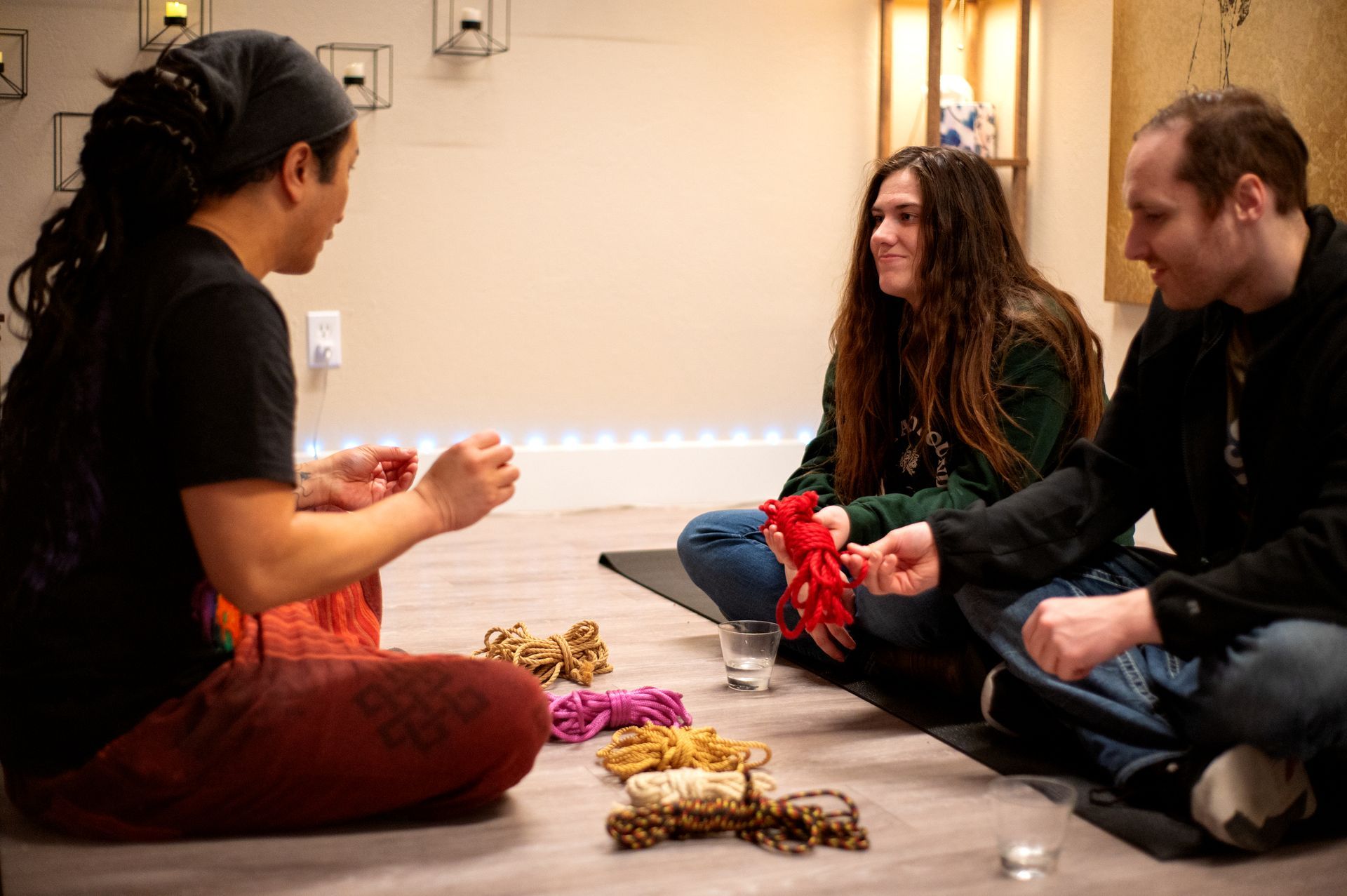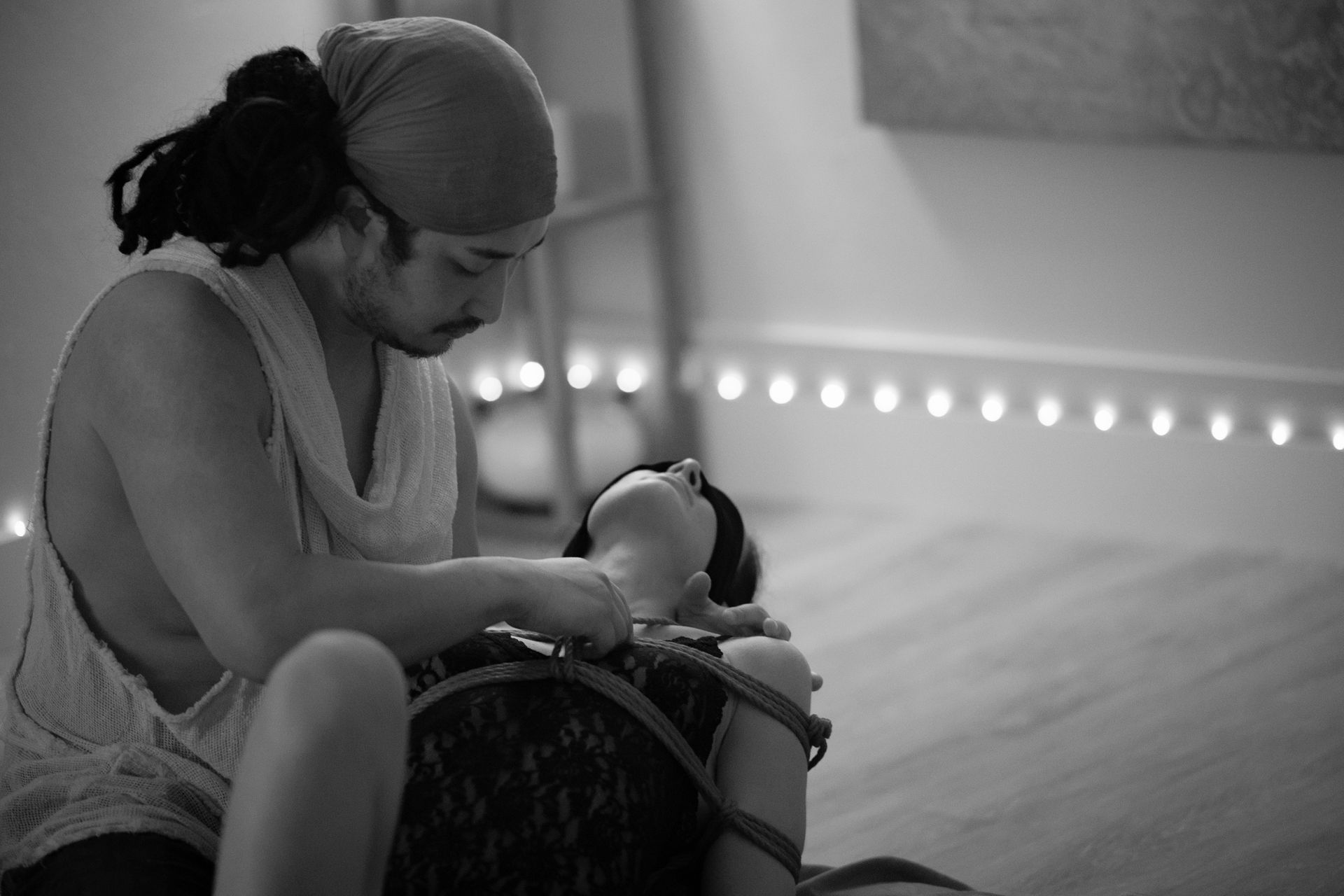Article
The First Knot: Beginning a Journey of Trust with Your Partner
The First Knot: Beginning a Journey of Trust with Your Partner
Every journey has a first step, and in Shibari, that step often begins with a single knot. Simple as it may seem, the first knot carries weight. It is not just rope on rope — it is the beginning of a dialogue between two people. For many, this moment stirs both excitement and fear: What if I tie it wrong? What if I hurt my partner?
Yet in Sacred Tie Shibari, that first knot is never about perfection. It is about intention, safety, and presence. It is about discovering how rope can shift from fear into flow, creating comfort not only in your own body but in the shared body of connection.
The First Step Into Intimacy
Think of the first knot as a gentle threshold. When rope touches skin, it whispers: I am here with you. I am holding you, not trapping you. In that moment, two partners step into a shared rhythm of breath and trust.
For beginners, even the simplest tie — a column tie around the wrist, ankle, or chest — becomes profound. It reminds both partners that intimacy isn’t measured in how complicated the knots look, but in how deeply you listen to each other while tying them.
Facing the Fear
It’s natural to worry: What if the rope is too tight? What if I don’t tie it correctly? These concerns are not weaknesses; they are part of the journey. In fact, they point to the heart of Shibari — awareness.
The truth is, Shibari was never meant to be flawless on the first attempt. Even masters begin with hesitation. What transforms fear into flow is not technical skill alone, but the courage to communicate openly.
The Sacred Solution: Safety and Communication
Before the rope even wraps, a conversation begins. Sacred Tie teaches that consent is the first knot — the one tied with words, trust, and listening. Check in with your partner. Ask what feels safe. Encourage them to speak if something doesn’t feel right.
From there, practice the basics:
- Keep two fingers’ space under every rope for circulation.
- Avoid tying over joints or delicate areas.
- Move slowly, watching your partner’s breath, eyes, and posture.
The goal is not a flawless pattern but a safe, shared experience. Each simple knot becomes a small victory of awareness, patience, and trust.
Rope as a Mirror
In that first knot, something powerful happens. Rope reflects the energy between you. If you rush, the rope feels rushed. If you breathe, the rope breathes. The outer lines become a mirror for the inner state — and the knot reveals not just skill, but the depth of presence between two partners.
This is where Sacred Tie reframes Shibari: not as a test of control, but as an invitation to connection. Rope awakens both bodies, reminding you of the subtle language of touch, tension, and release.
Moving From Fear → Flow
The journey of Shibari begins in uncertainty but flows into confidence. With each knot, fear softens. With each breath, comfort grows. What begins as hesitation becomes harmony.
The first knot, then, is not small at all. It is the doorway into a practice where rope teaches us that intimacy is not built on perfection, but on presence.
Sacred Tie Reflection
In Sacred Tie Shibari, we honor the first knot as more than a beginner’s exercise. It is the embodiment of trust. A reminder that every great connection begins with one simple act of courage — reaching out, tying gently, and saying with our hands: I am here with you.
Signature Quote
“The first knot is not tied with rope, but with trust. Every twist of fiber becomes a promise: I see you, I hold you, I honor you.”
—
Ederson Syvongsa, Creator of Sacred Tie Shibari
The body content of your post goes here. To edit this text, click on it and delete this default text and start typing your own or paste your own from a different source.
share this
Related Articles
Related Articles
